INTRODUCTION
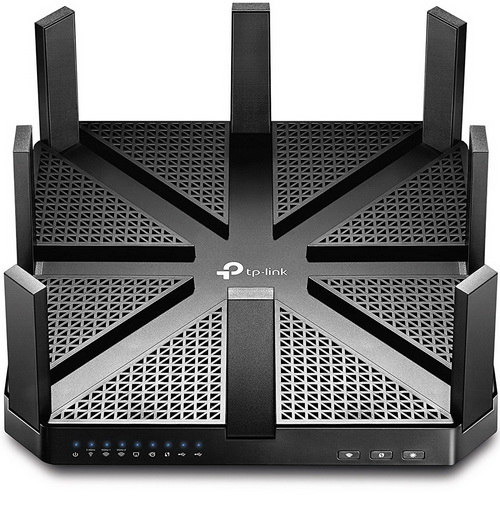
With more and more people owning several smartphones, tablets and notebooks demand for high-performance wireless modem/routers has never been higher and although dual-band models are currently dominating the market thanks to their very tempting price/performance ratio for some people the more expensive tri-band models are a one way. Now if you've been following our reviews you should know that tri-band models don't necessarily offer faster "single-link" speeds compared to dual-band ones but they do support more concurrent connections with wireless devices (mostly 802.11ac 5GHz compatible ones) and so if your household has numerous such devices (device-heavy homes as some manufacturers call them) a tri-band model should be a better fit. TP-Link released their Archer C5400 Tri-Band MU-MIMMO Gigabit Router back in 2016 which after receiving overwhelmingly positive reviews was upgraded to hardware version V2.0 and that's what todays review is all about.
Founded in 1996, TP-Link is a global provider of reliable networking devices and accessories, involved in all aspects of everyday life. The company is consistently ranked by analyst firm IDC as the No. 1 provider of WLAN and broadband CPE devices, according to latest published IDC Worldwide Quarterly WLAN Tracker Report, Q32016 Final Release, supplying distribution to more than 120 countries and serving hundreds of millions of people worldwide. With a proven heritage of stability, performance and value, TP-Link has curated a portfolio of products that meet the networking needs of all individuals. Now, as the connected lifestyle continues to evolve, the company is expanding today to exceed the demands of tomorrow.
Just like its immediate competition the Archer C5400 V2 is a tri-band quad-stream (4x4) router which offers a combined Wi-Fi bandwidth of up to 5333 megabits per second via two 5GHz bands (2167Mbps each) and a single 2.4GHz band (1000Mbps thanks to NitroQAM). The Archer C5400 V2 is actually equipped with one of the most powerful processors available in the market currently and more specifically the BCM4709C0KFEBG dual-core ARM Cortex A9 CPU by Broadcom clocked at 1.4GHz (same as the EA9500 by Linksys) which TP-Link paired with a total of 512MB RAM (256MB over the EA9500), 128MB of NAND flash and three BCM4366 4x4 radios. The Archer AC5400 also supports Beamforming (directs Wi-Fi signal to your wireless devices according to their location and distance), MU-MIMO (Multi-User Multiple Input Multiple Output - efficient handling of wireless bandwidth) and link aggregation/Ethernet bonding (can use more than one LAN NIC to achieve even higher performance). Externally the Archer C5400 V2 features a total of 8 high gain foldable Antennas (can't be replaced), 4 RJ45 Gigabit Ethernet ports, RJ45 Gigabit WAN port, USB 3.0 port and a USB 2.0 port. Also before we continue with our review i just wanted to point out that the only "visible" differences between V1 and V2 of the Archer C5400 (unfortunately we don't have both versions side by side to check for any hardware differences) is the added support for Amazon Alexa and IFTTT and extra QoS (quality of service), antivirus and parental controls thanks to TP-Link's Homecare suite (AV is provided by TREND micro).
SPECIFICATIONS AND FEATURES

PACKAGING AND CONTENTS
The original Archer C5400 was shipped inside a white and green box but V2 is shipped inside a blue and green box that has a product picture at the front right next to the company logo and the main product features.
Printed on the left side of the box are the unit’s features and specifications along with the contents of the bundle.
A quick reference to the available apps for iOS and Android smartphones is placed on the right side.
TP-Link showcases some of the technologies used in the Archer C5400 at the rear of the box.
The entire bundle is placed in plastic bags and inside a large piece of cardboard as seen above.
Along with the Archer C5400 and its power adapter and cord you will also get an RJ45 LAN cable, two quick installation guides, warranty information paper, technical support card, quality control paper and a card with the default SSID and password used with all three bands.
THE ARCHER C5400
Measuring 230mm in width and length (square design) and just 43mm in height the Archer C5400 is among the largest modem/routers to ever pass from our lab.
Almost all of the top area is perforated and at the center TP-Link has placed their logo.
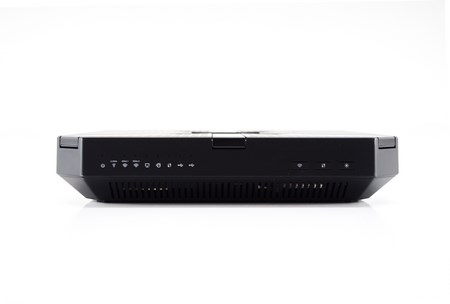
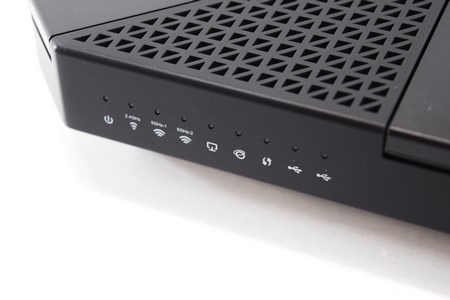
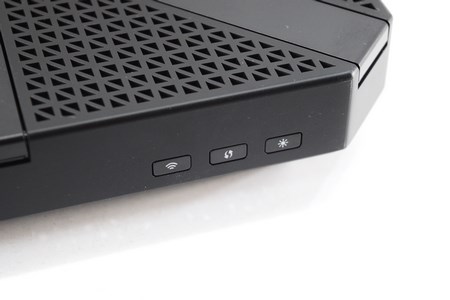 At the front of the router we find 9 activity LEDs (power/wireless bands/LAN connection/Internet connection/WPS status/USB ports) and three buttons from where you can turn on/off wireless connectivity, initiate WPS connection and turn on/off the activity LEDs.
At the front of the router we find 9 activity LEDs (power/wireless bands/LAN connection/Internet connection/WPS status/USB ports) and three buttons from where you can turn on/off wireless connectivity, initiate WPS connection and turn on/off the activity LEDs.
Moving at the rear of the Archer C5400 V2 we find a reset button, USB 2.0 port, WAN Gigabit port, 4 Gigabit LAN ports, USB 3.0 port, on/off power button and the DC in.
When all 8 foldable high-performance Antennas are extended the height of the Archer C5400 climbs to roughly 122mm.
SETUP
If you don't want to perform an automatic firmware update you can always download the latest V2 firmware from TP-Link's support page seen above.
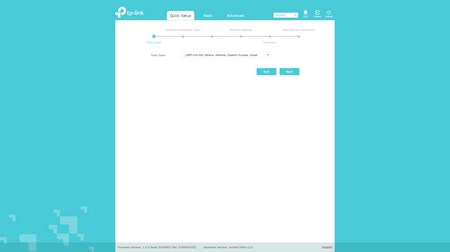
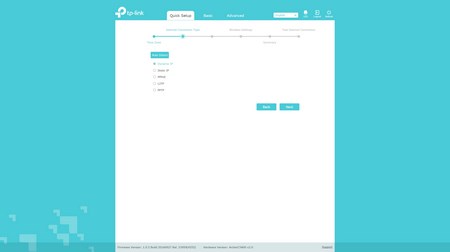
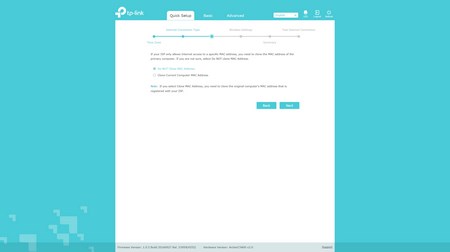
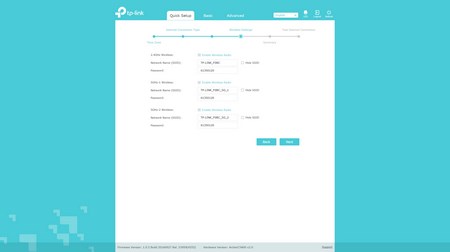
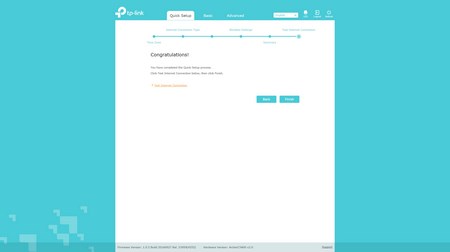
To finish the quick setup you will need to choose your time zone, set the internet connection type, clone your computers MAC address (if needed because of your ISP) and adjust the wireless settings.
WEB INTERFACE PART 1
As with all models in the market you can login with the default user name and password (which of course you can change later on like we did).
The main web interface screen does what we've seen numerous times to date and that's to give you a quick look at the status of the router (internet connectivity, connected devices (both wirelessly and wired) and which bands are enabled/disabled.
Clicking on the wired and wireless clients reveals their assigned IP and MAC addresses.
Likewise if you click on the USB connected clients you will see their type and in the case of storage media total and available capacity.
You can also run a SpeedTest from the main screen which is of course based on the well-known one by Ookla.
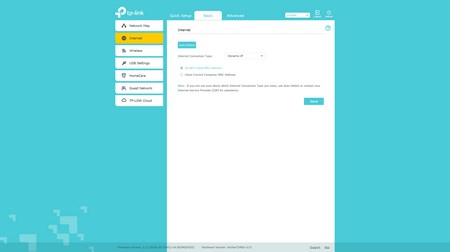
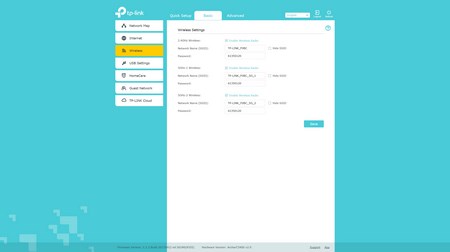
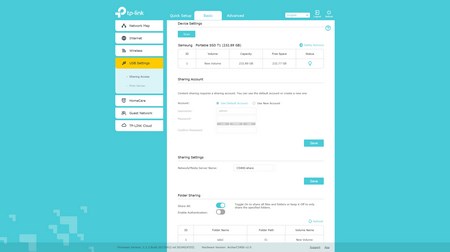
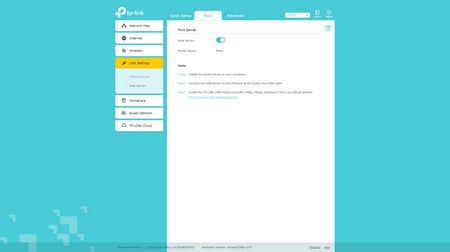
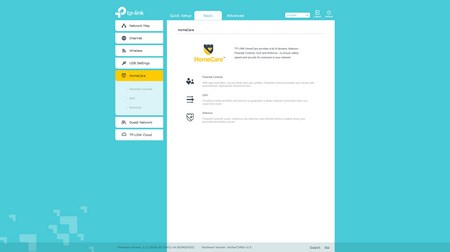
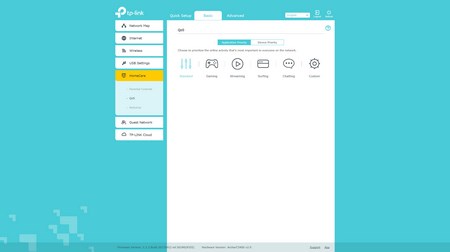
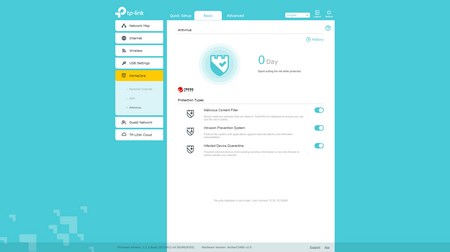
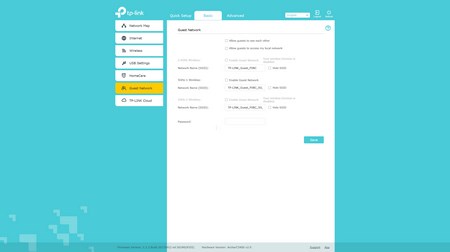
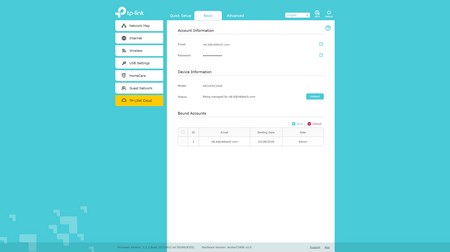
The tabs are separated into two columns Basic and Advanced and so from within the basic one you can set the connection type, change the SSID and password for all three bands, configure sharing for all attached USB devices, setup the Homecare feature (parental controls, QoS and AV), enable the guest network feature and you can also register for a TP-Link Cloud account so you can access the router from anywhere on the planet (access however is not through tplinkcloud.com like with IP cameras by TP-Link but from tplinkwifi.net).
WEB INTERFACE PART 2
The advanced column has some identical settings as the basic one but as you can all see the status screen is far more detailed.
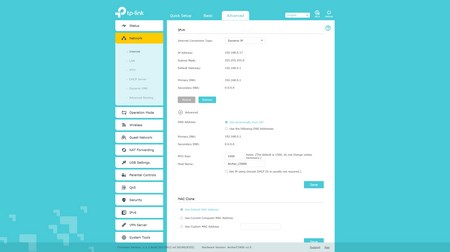
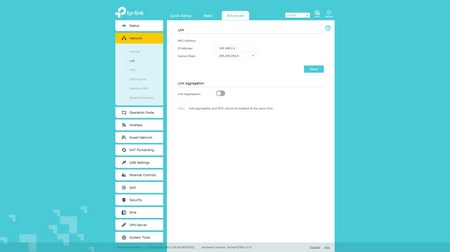
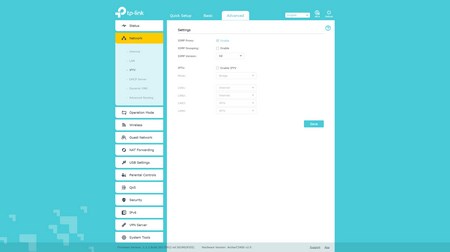
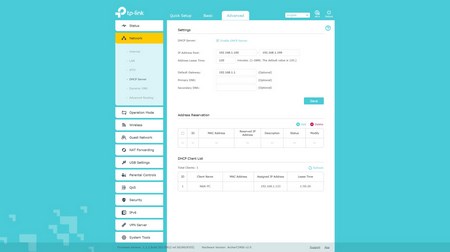
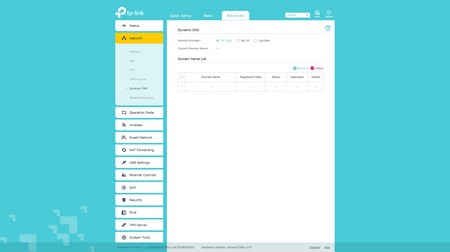
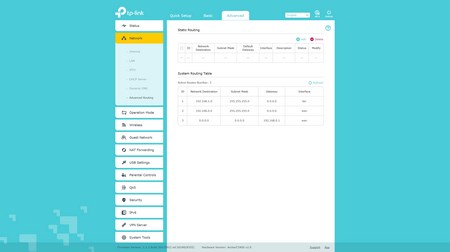
From the network tab you can change the connection type, clone your systems MAC address, enable/disable link aggregation, enable/disable the IPTV feature (can't work with link aggregation), setup the DHCP server, use the Dynamic DNS (DDNS) feature and finally use advanced routing if needed.
You can also set the Archer C5400 to behave as an access point instead of a router through the operation mode tab.
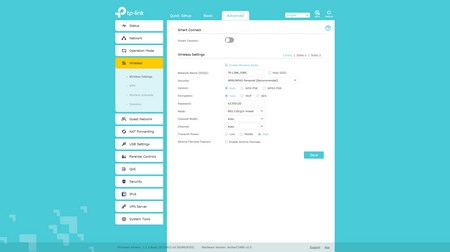
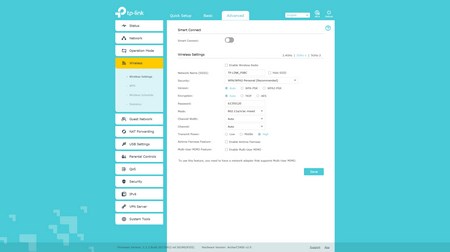
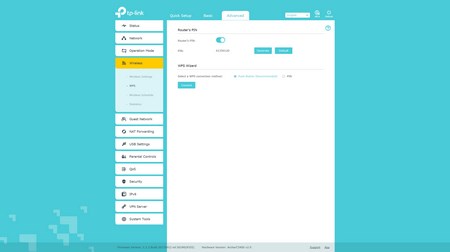
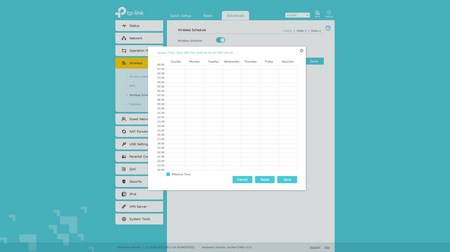
Via the wireless tab you can enable smart connect (switches between all three bands according to which can provide the best performance to your wireless devices), adjust the type of encryption, SSID, password and signal strength for all three bands (you can also enable/disable MU-MIMMO on the 5GHz bands), setup the WPS feature, use the scheduling function (basically allows you to turn Wi-Fi on and off on specific days and times) and check the up/down statistics.
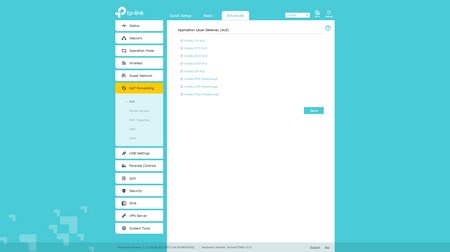
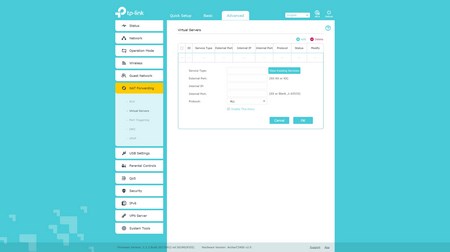
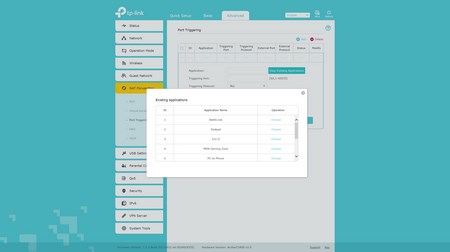
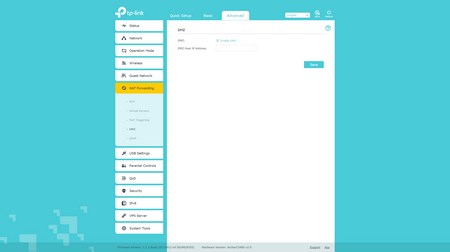
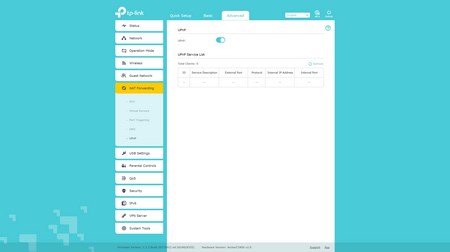

TP-Link has placed a NAT forwarding tab from where you can enable ALG (Application Layer Gateway - Proxy like protection), add virtual servers, enable port triggering, use DMZ (demilitarized zone) and of course enable/disable the UPNP feature (universal plug and play).
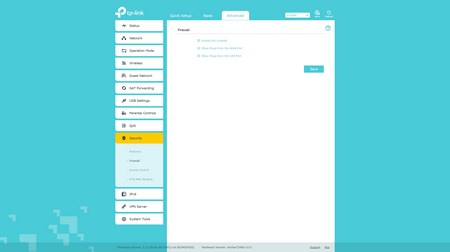
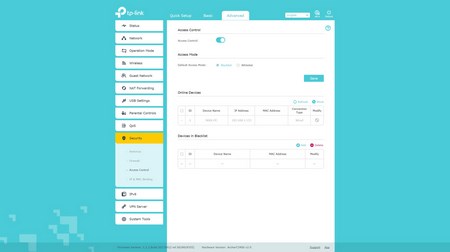
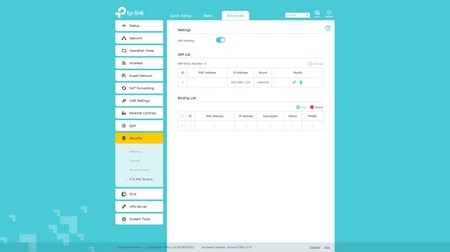
The security tab contains the AV, firewall, access control and IP/MAC address binding features.
As expected from any current modem/router the Archer C5400 is ready for the IPv6 protocol.
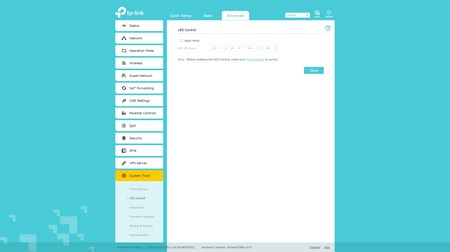
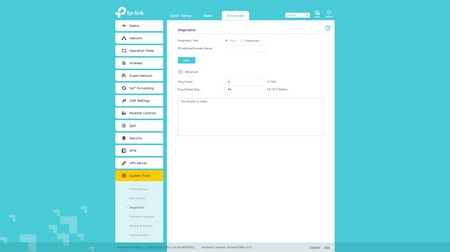
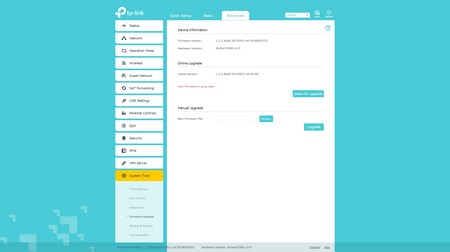
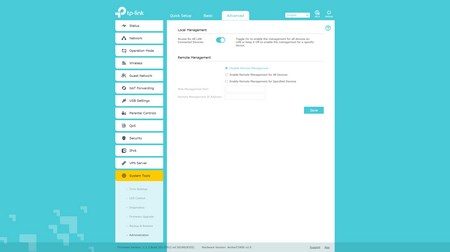
Finally through the system tools tab you can adjust the time, turn the front LEDs on and off (night mode feature), perform network diagnostics, update the firmware, backup and restore all the settings on the router and finally you can enable remote management for any and all attached devices.
TESTING METHODOLOGY
Since standalone routers can't directly connect to the internet (unless you have a cable connection which we don't) and thus the modem is responsible for internet speeds the only thing that's left is to test and see how much bandwidth they can offer by directly linking two devices with them. So once again we will be using the networking benchmark by Passmark (v.8), QCheck by Ixia and ATTO 2.47 (since April 2015) to test such devices the same exact way we test Powerline adapters and Modem/Routers. Since we need to test new features and specifications all routers are benchmarked with their highest available wireless standard/band (5GHz in this case). Our systems are outfitted with Kingston HyperX Predator 480GB PCIe SSDs, AC1200 USB 3.0 adapters (we have AC1900 – AC1300 effective – models here but we will continue using the AC1200 adapters to provide comparable results) and CAT7 cables and are placed 15m away from the router with 3 concrete walls between them while each test is repeated a total of 6 times after which the average scores are recorded into our charts. Both systems have Windows 10 Pro installed with all the updates until the 5th of March 2018.
We’ve received several requests by some of you to also measure power consumption when testing modem/routers and although differences are not that great between similar models we decided to do so (average power consumption during tests is placed in our charts). Also again after many requests from April 2017 we will also do our best to measure wired USB performance of any modem/router or standalone router that gets to our lab with the help of Crystal Disk Mark v5.1.2 and a Samsung T1 250GB Portable SSD.
TEST RESULTS

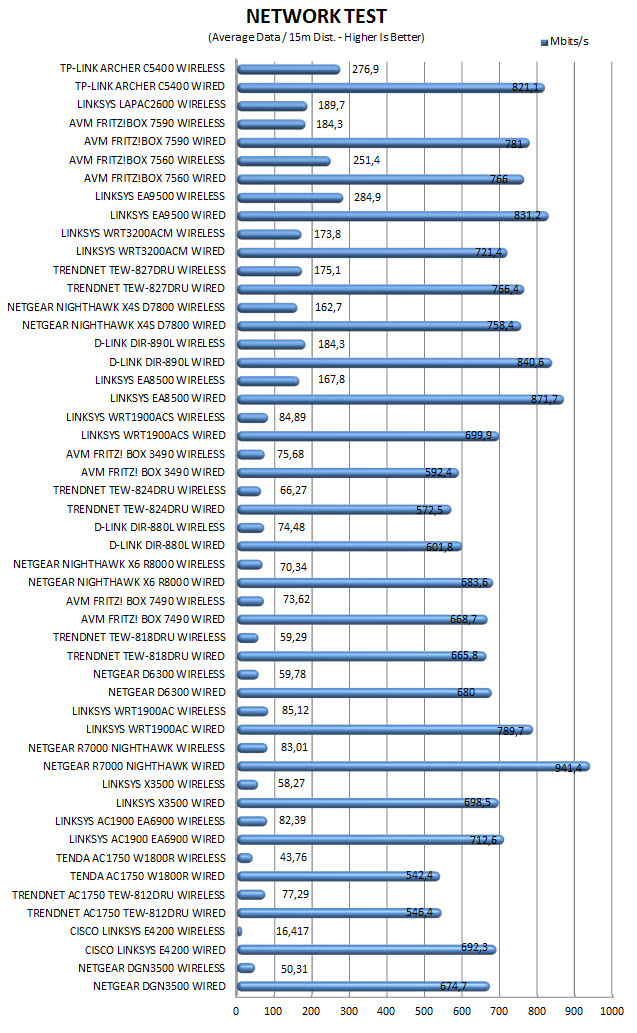
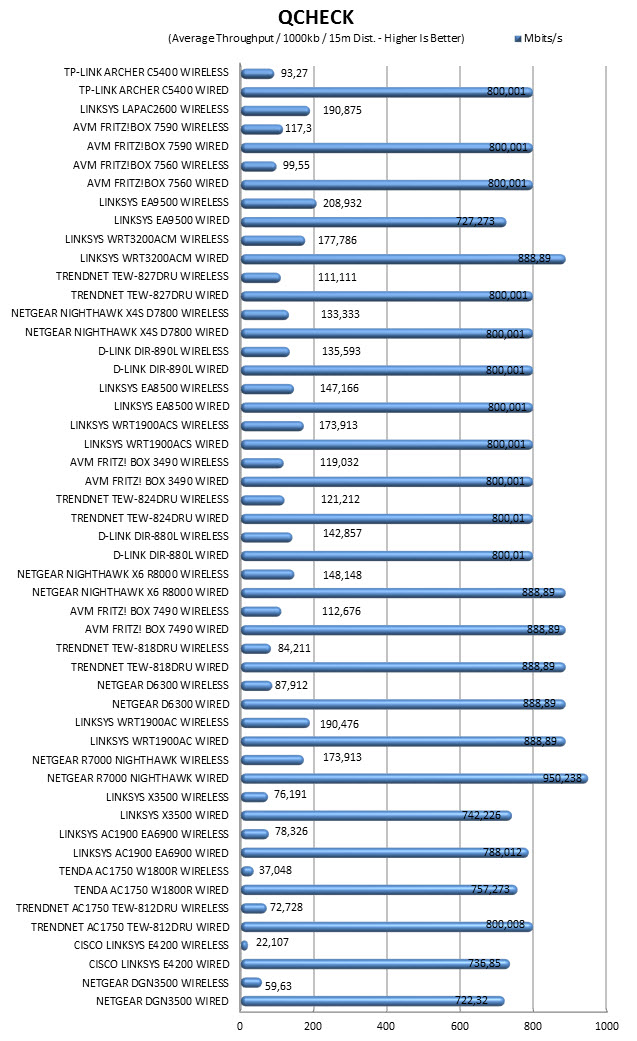
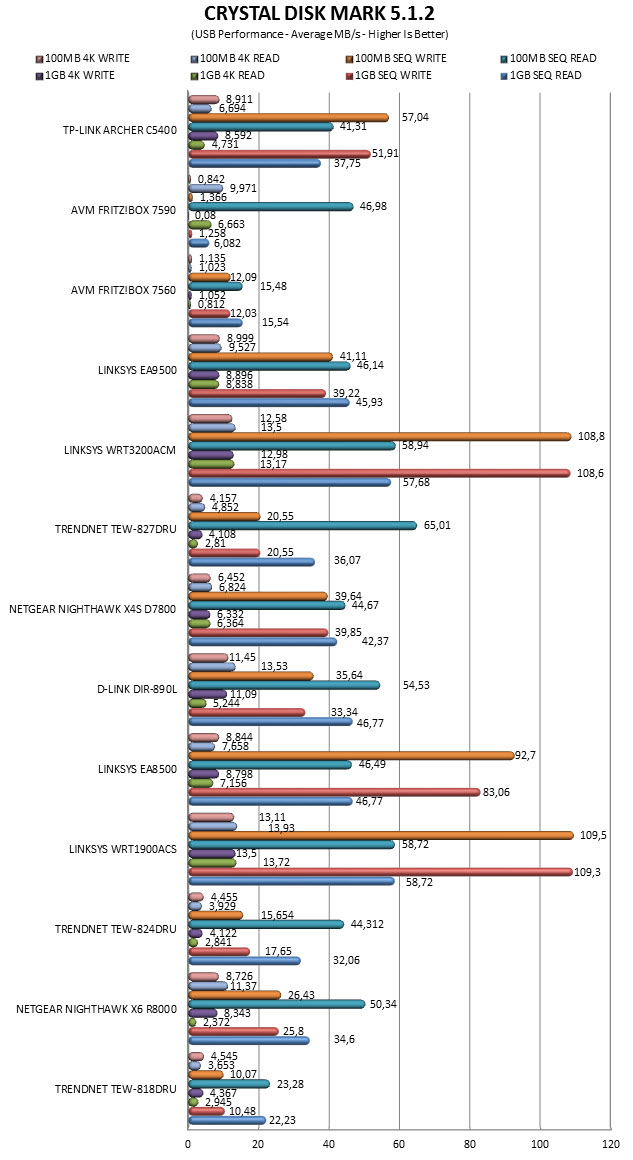

CONCLUSION
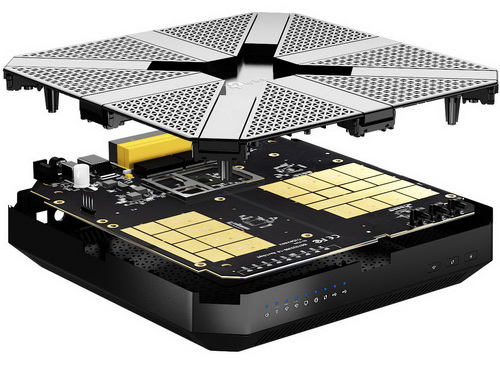
TP-Link may not be the first name to come in mind when people talk about high-performance network equipment but thanks to the original Archer C5400 and the V2 version now they are definitely on the right track for that. This is not so much due to the single-link performance of the Archer C5400 V2 since from all our tests it only excelled in Passmark’s network test but rather because of its ability to connect with numerous wireless devices without any issues whatsoever (thanks to its Tri-Band feature) and also use link aggregation (a very rare feature which can help increase performance under heavy loads if your system supports it that is). USB 3.0 performance is actually quite good as you can all see but just like with most modem/routers in the market it’s nowhere near to what we’ve gotten used to by Linksys and their models (they keep dominating those charts). As for its web interface it’s without doubt among the most detailed ones we’ve ever encountered and with enough features to easily cover even the most demanding users. Finally when it comes to changes between V1 and V2 yes we would expect something more than what TP-Link has added but at the same time even that is better than nothing at all.
Currently the Archer C5400 V2 Tri-Band MU-MIMMO Gigabit Router by TP-Link retails for USD250.27 in the USA (Amazon.com) and 213Euros inside the EU (Amazon.co.uk) a price tag which makes it one of the most affordable (if not the most affordable) AC5400 routers in the market today. Granted its wireless performance could be better but it still is a tri-band, feature-rich router capable of covering most consumers out there and since it’s also very affordable it certainly deserves our Golden Award.

PROS
- Build Quality
- Design
- AC5400 Technology (Concurrent 802.11n & Dual 802.11ac)
- Features (Beamforming, MU-MIMO And Tri-Band Technology)
- 8 High Gain Antennas
- Web Interface
- 4 Gigabit Ethernet Ports With Link Aggregation
- USB 3.0 Port & USB 2.0 Port
- Price (For Some)
CONS
- Wireless Performance (Compared To Other High-End Models)
- USB Performance (Compared To Linksys Models)

 O-Sense
O-Sense





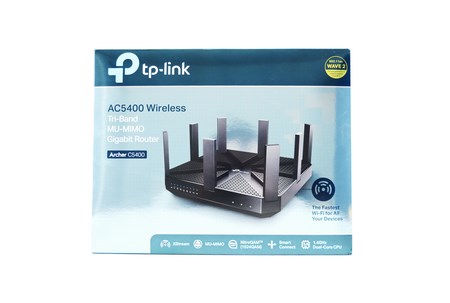
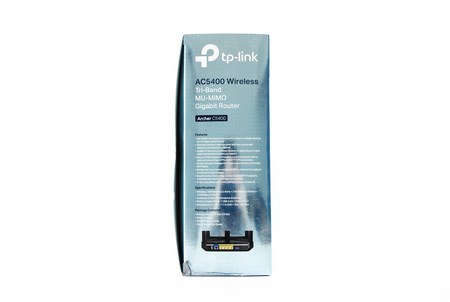
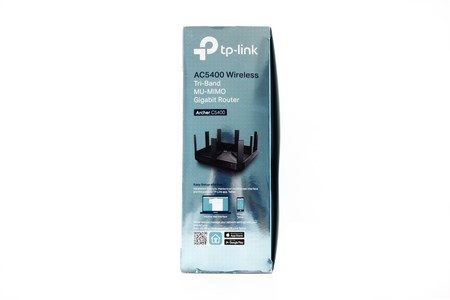
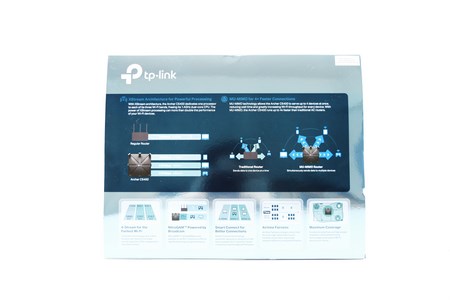
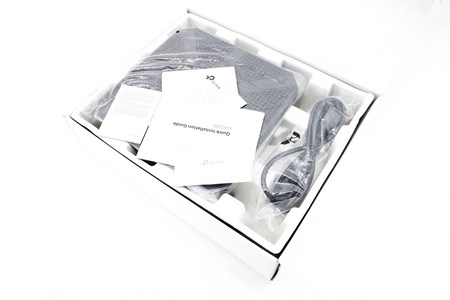
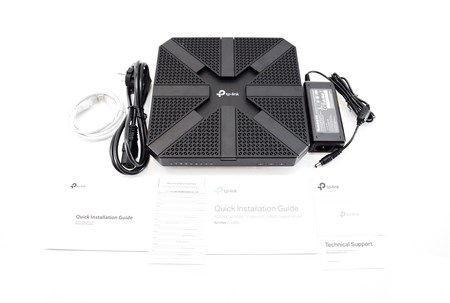
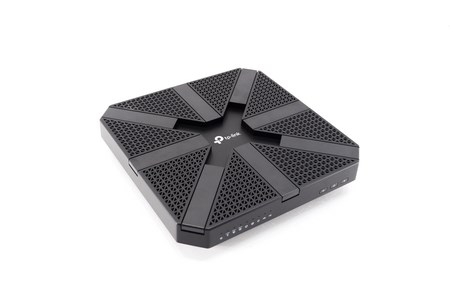
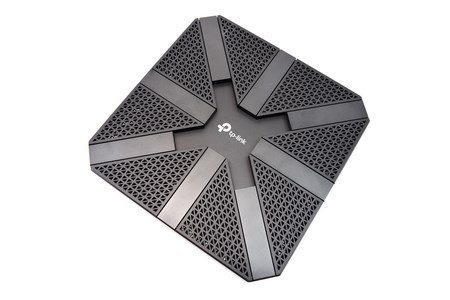
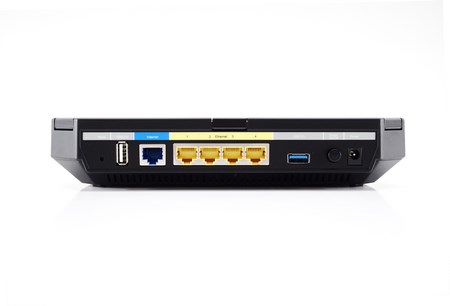
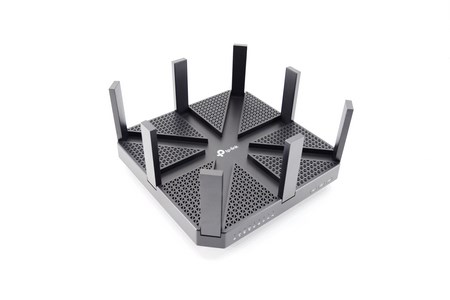
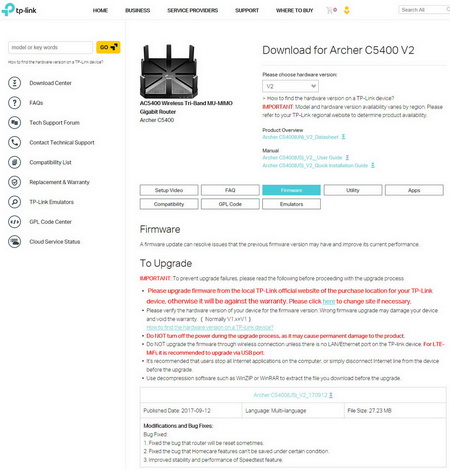
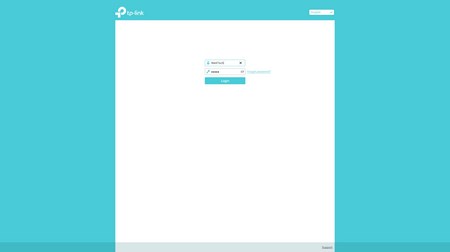
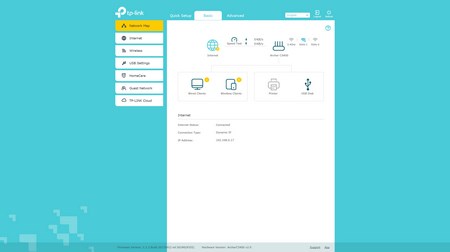
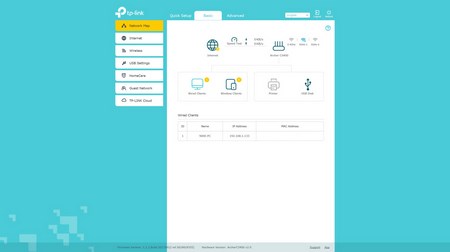
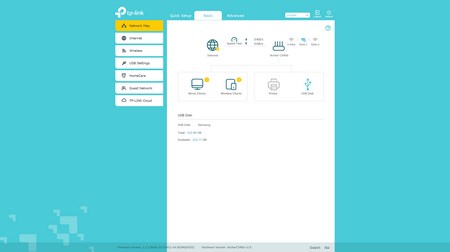
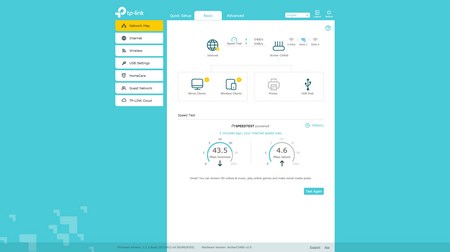
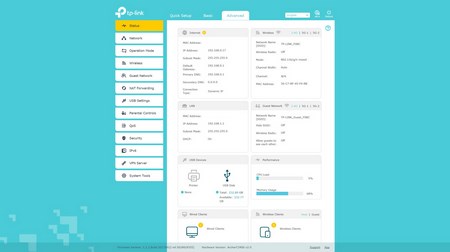
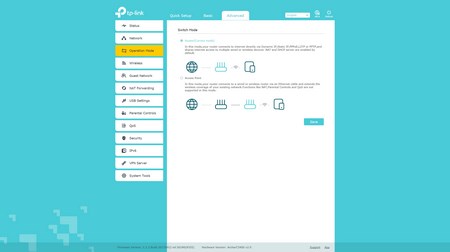
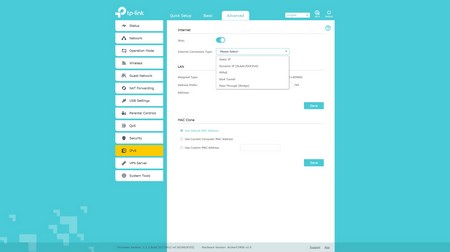


.png)

